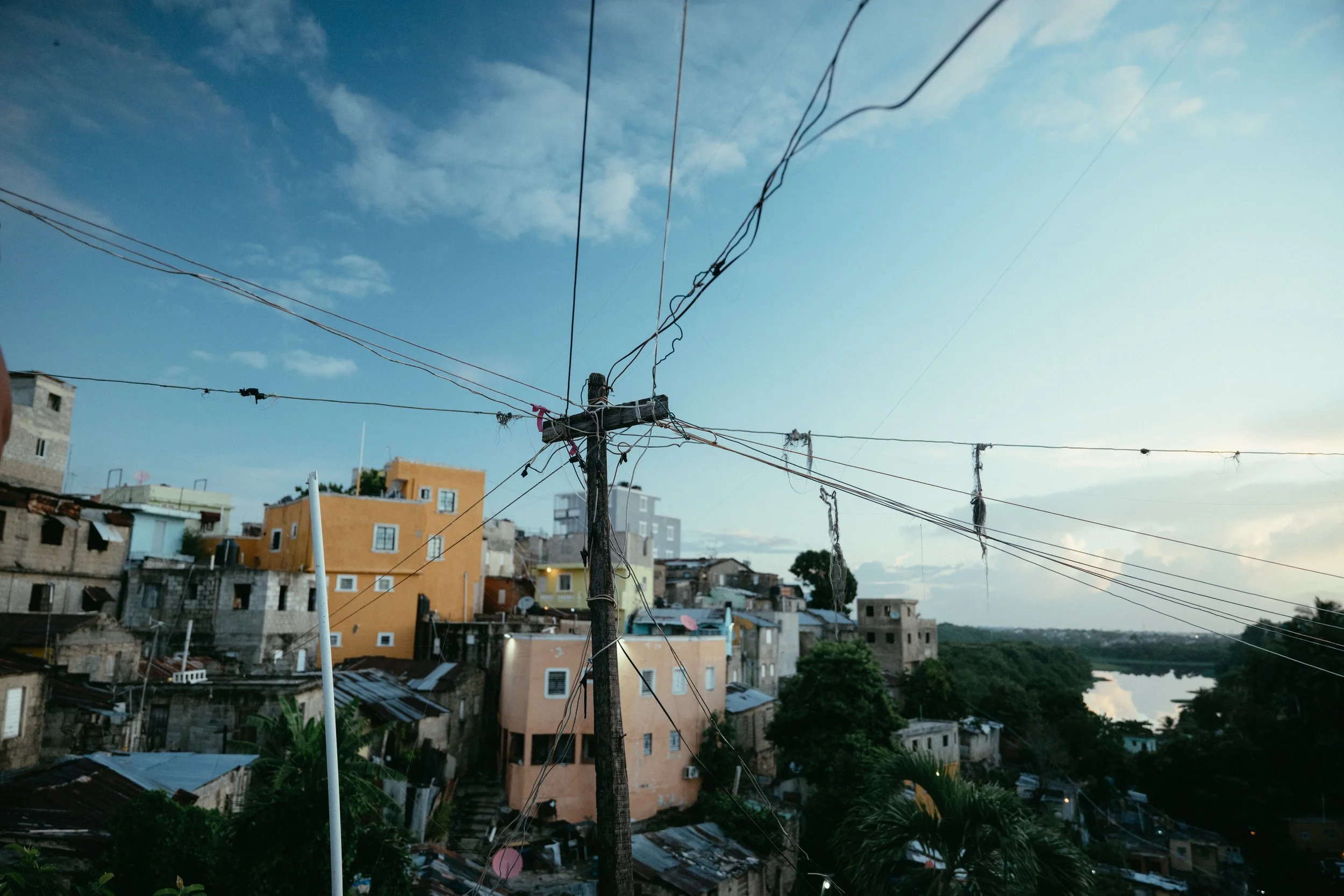The Camera Is the New Bullet: '42nd Street' and the Art of Dominican Resistance
At the Los Angeles Latino International Film Festival, José María Cabral’s visceral documentary explores art, survival, and defiance in a corner of Santo Domingo often overlooked by the world.
By Natalie McCarty
“You see all kinds of things in the underworld.”
José María Cabral’s brilliant 42nd Street is not a portrait of celebrity, nor a glossy depiction of culture from afar. It’s a raw, kinetic dive into a 600-meter stretch of Capotillo, a Dominican barrio in Santo Domingo, where music is survival and art is protest. The film unfolds as a living, breathing portrait of a place too often erased from dominant narratives about culture, creativity, and social change.
We are pulled into an urban crucible where art, danger, poverty, and resistance blur into one chaotic, humming organism. It’s a place where sound systems roar from balconies, where dancers wield razor blades with their tongues, and where the hustle is both a curse and a creed.
At the film’s center is Demetal, the founder of ZM Music and the magnetic, steadfast heartbeat of the local dembow scene. “Before, everyone wanted to leave 42nd Street,” he says. “Now everybody wants to come here.” Demetal isn’t exaggerating. In a place largely ignored by institutions and often demonized in the media, he’s building an empire from nothing by recruiting local kids off the streets and into the studio, giving them a shot at something that looks like self-worth, if not yet success.
His voice carries real power. Known as the chief of 42nd Street, his magnetism shines through every frame of the film. More forceful, proactive, and genuinely authentic than many of our political leaders, he’s driving real change in his community.
Image Courtesy of 42nd Street
Cabral’s 42nd Street captures this immense power of creating beauty exactly where the world tells you there is none.
The film throbs with motion. Dancers twirl in alleyways, teenagers rap on street corners, police raids sweep through the streets, bodies run, arguments ignite, and children walk to school amid the bustle. Then there are the parties—teteos, as they’re known locally—which serve as both communal catharsis and quiet rebellion. They are cultural rituals. Political statements. Survival strategies.
This is the hustle. And the hustle is very much alive in Capotillo.
Teteos, Cabral shows us, are loud, visceral celebrations rooted in the neighborhood’s own ecosystem of music, movement, fashion, and attitude. They take place in the street and pulse with dembow: a Dominican-born genre that is part reggaetón, part hip-hop, part protest song. In these spaces, traditional dichotomies of legal and illegal, sacred and profane, dissolve.
The hustle is the pulse of the film, whether it’s the dancers on the street, the women running their own deals, or the men owning their grinds. There are the dancers and the “zombies,” users of a street drug that slows their movements, turning their limbs into surreal sculptures. Then, of course, there’s the broader community. We meet Natasha, an aspiring dancer and ingenious hustler, and Maco, who hustles in his own (and every) way, making a living by betting on everything from cockfights to beta fish matches. The film doesn’t romanticize any of it, but it refuses to look away. And by refusing to look away, it grants dignity to people whose lives are usually observed only from a distance, or not at all.
This is street-level storytelling in the truest sense: no filters, no pity, no narrative scaffolding imposed from above. And yet, Cabral’s work is far from raw footage. It is crafted, intentional, artful. The editing alone is a feat, as he somehow effortlessly interweaves all of these complex stories without ever losing emotional clarity. The cinematography, often handheld, mirrors the energy of the people it captures. There is a claustrophobic quality to some of the shots, especially during the night scenes. But within that confinement, we begin to feel something else: a certain freedom.
“We use the camera as the new bullet,” says Demetal, which is a line that reverberates long after it’s spoken. Beyond merely documenting this world, Cabral weaponizes cinema in service of truth. And that truth is complex. There is corruption. There is political rot, as the film describes it: “Justice here is rotten.” But there is also desafío. There is arte. There is amar y lealtad. And, above all, there is comunidad.
This tension between oppression and innovation is the animating force behind 42nd Street. Cabral doesn’t offer easy answers. Instead, he offers something rarer with this close, sustained, intimate presence. In a media landscape that so often reduces communities like Capotillo to statistics or stereotypes, 42nd Street stands out for refusing to simplify.
Image Courtesy of 42nd Street
In a world increasingly dominated by algorithm-driven content and surface-level storytelling, this film is a reminder of the power of grounded, boots-on-the-ground filmmaking. It is urgent. It is beautiful. It is necessary.
Above all, it reminds us that the most compelling stories often unfold at the margins, on streets like this, where the collective and unmistakable soul of a place comes together to create a vibrant tapestry of life.
Image Courtesy of 42nd Street



